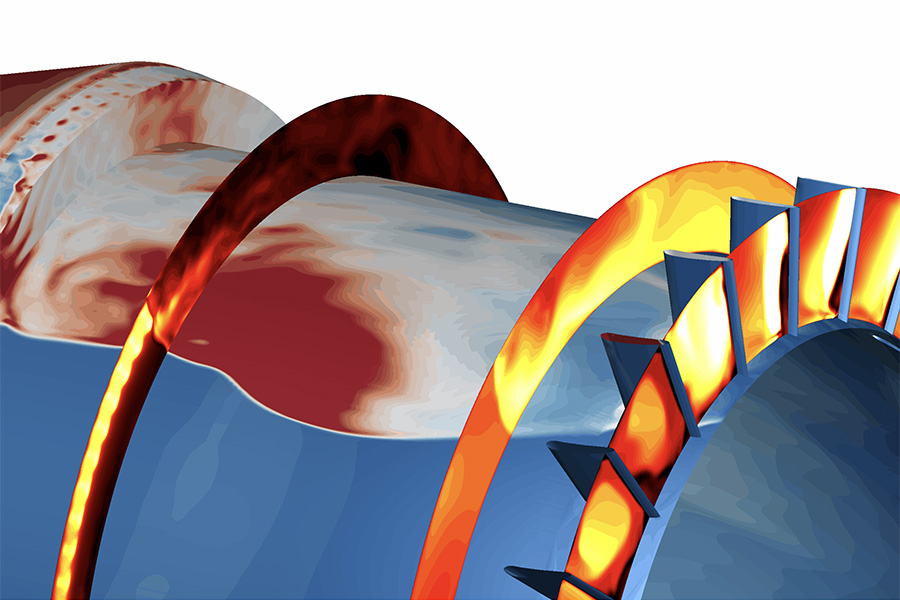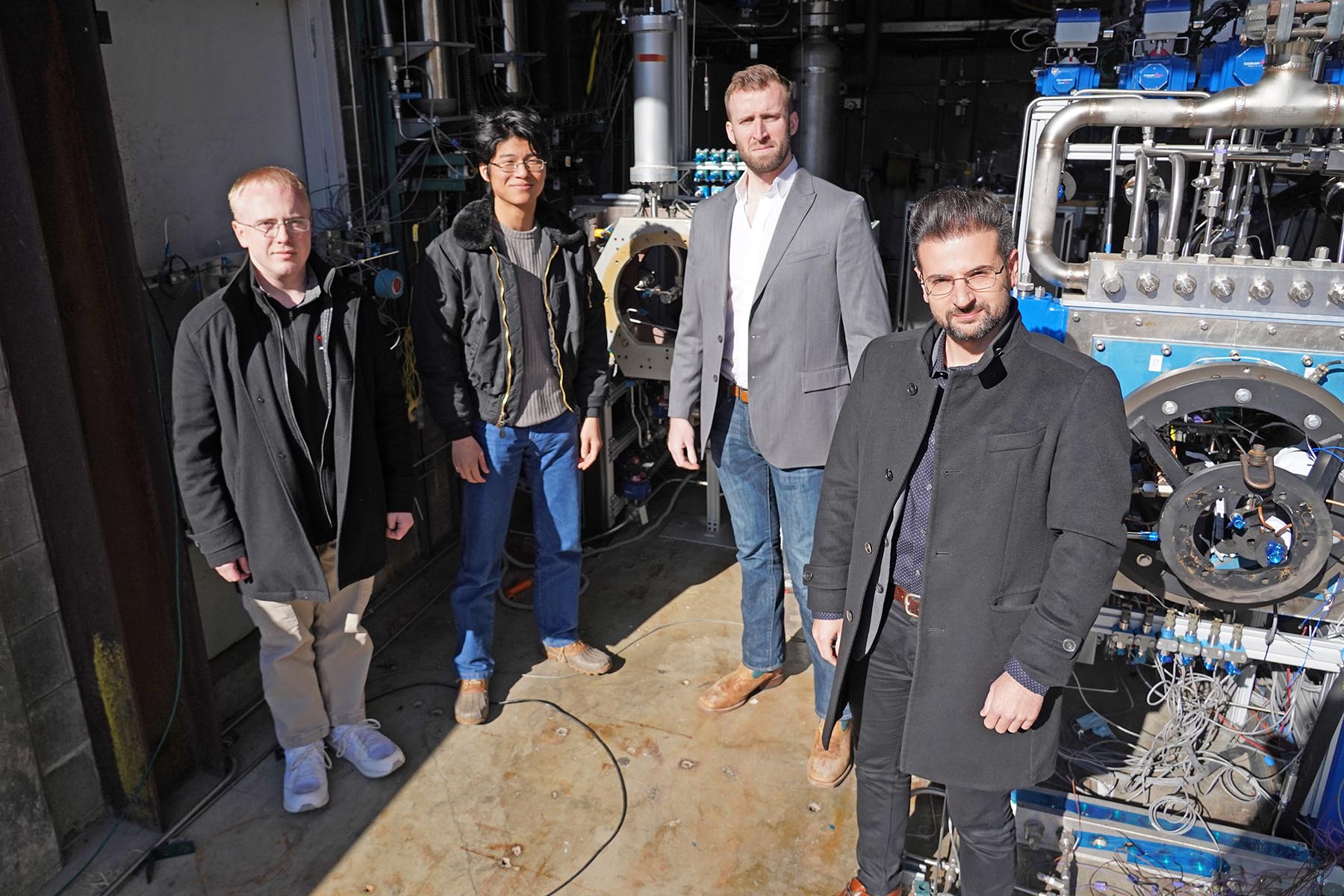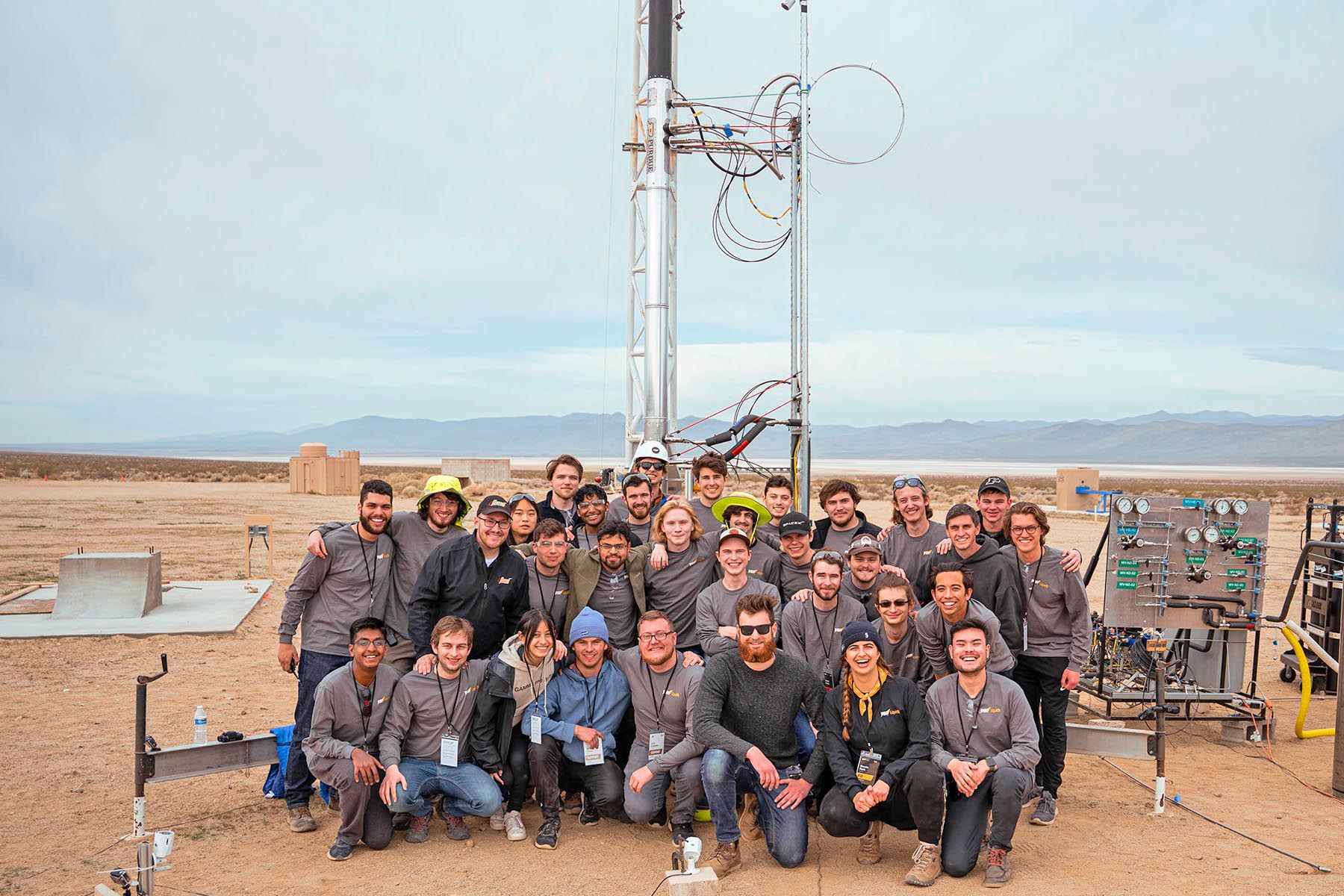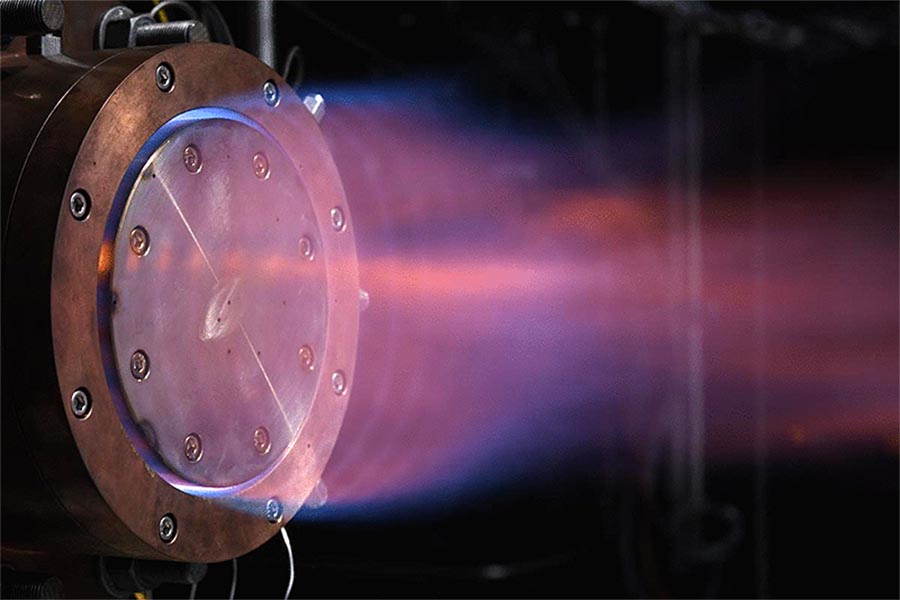Propulsion
Since 1948, Purdue researchers have set the standard for propulsion experiments. Work at Zucrow Labs led to the development of the original Space Shuttle Main Engines. Today, new technologies allow propellants, combustors, and rocket engines to be conceived, constructed, and tested with unprecedented accuracy. With the blossoming private space industry, Purdue propulsion engineers are in high demand.
Purdue's expertise also includes turbines and compressors, powering the next generation of jet engines. With an unmatched array of wind tunnels and other facilities, they are also investigating the future of hypersonics: Mach 4, Mach 6, and beyond!
Zucrow Labs is the largest academic propulsion lab in the world. Facilities include:
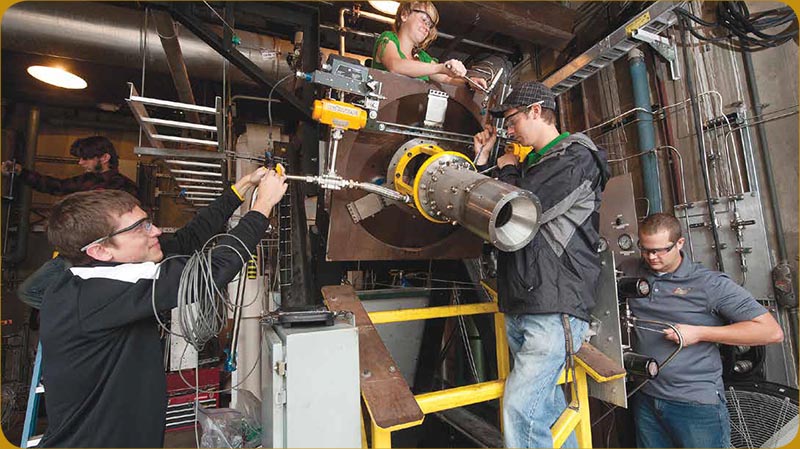
- Multiple reinforced concrete test cells with laser diagnostics
- Propellant labs with mixers, evaluation rigs, and safety equipment for remote operation
- Compressed air delivering 3300 cubic feet at 2200 psi
- Air heater, capable of testing at 1500°F at Mach 4
- On-site bulk storage and infrastructure for hydrogen, liquid oxygen, liquid nitrogen, and natural gas
- Data acquisition and storage with analog/digital sensors, high-speed cameras, and controls
More detailed info at purdue.edu/zucrow
Faculty in Propulsion
- Laser-absorption spectroscopy, laser-induced fluorescence, & IR imaging sensors for gas temperature, pressure, velocity, and chemical species
- Molecular spectroscopy, photophysics, & energy transfer in gases
- Energetic materials (e.g., explosives & propellants) detection & combustion
- Combustion and propulsion systems (small and large scale)
- Biomedical sensing
- Advancement of next-generation propulsion concepts including Rotating Detonation Engines (RDEs), Rotating Detonation Rocket Engines (RDREs) and Scramjet Engines
- Laser diagnostics development for applied thermal environments including RDEs, RDREs, gas-turbines, rockets, IC engines, and scramjet engines
- Laser Diagnostics and Spectroscopy for detonations, combustion, sprays, energetics, propellants, hypersonics, plasmas, and non-equilibrium flows
- Estimation of performance, efficiency and emissions using state of the art optical diagnostics (PLIF, CARS, TP-LIF, PIV, 3D Imaging, X-Rays, PIV, Molecular Tagging, Thermographic Phosphors and Pressure Sensitive Paints)
- Thermal-fluid behavior at the extremes, including turbulent, acoustically coupled, high-temperature, high-pressure, multiphase, and non-equilibrium reacting flows

